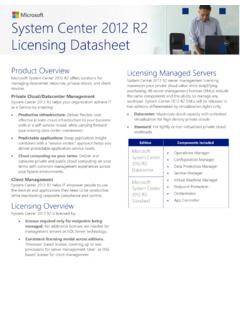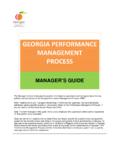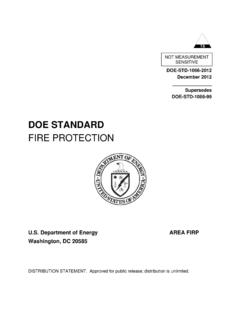Transcription of Planning Guide 2012 web - Temp-Cast
1 Temp-Cast Planning Guide (Spring 2010) Dear Reader: For those who are not familiar with masonry heaters this Guide will provide you with some history about these extraordinary fireplaces, the common sense principles of radiant masonry heating and the unique features that make them such efficient and clean burning heaters. This Guide will also explain why a Temp-Cast masonry heater has an extremely low environmental impact when compared to other wood burners and conventional heating systems. We also demonstrate that masonry heaters are easily the safest of all solid fuel appliances and how they can enhance a healthy life style. If your building plans already include a Temp-Cast fireplace, the Guide will give you the details necessary to accurately plan the installation.
2 If you are still undecided, it will help you to understand the construction and installation requirements. Our fully modularized core kit permits complete freedom of design to finish your heater with whatever material best complements your d cor and style of home. Your choices may include indigenous rock, stone, tile or combinations of these, allowing you to create a unique fireplace, which will be the focal point of your home. The task of selling masonry stoves in North America is essentially one of education. With no masonry stove tradition here, virtually all of our marketing efforts go to educating the consumer, which has become easier with increased awareness and focus on green technologies. Invariably, we find that when consumers are fully informed, they also become masonry-heating converts.
3 The masonry heater industry continues to grow, gaining acceptance with a larger segment of consumers every year. Temp-Cast has been a leader in this industry for almost 20 years, which makes us one of the most experienced in North America, with thousands of heaters in daily use. We have been tested for safety, performance & emissions over this time, in many jurisdictions, and we are proud of our consistently excellent performance and low environmental impact. We hope that you find this Guide helpful and informative, and we would be pleased to review and comment on your plans. If you find that you need additional information, please visit our website at , email us at or call us toll-free at 1-800-561-8594. (You can also write to us at Temp-Cast Enviro-Heat Ltd, Bedford Park Postal Outlet, Box 94059, Toronto, Ontario, Canada M4N 3R1.)
4 Sincerely, John LaGamba President Temp-Cast Planning Guide CONTENTS: Section 1. MASONRY HEATING PAGE The Birth of the Masonry Stove 3 Radiant Thermal Mass Heating 3 Combustion and Heating Efficiency 4 Heating Performance 5 Energy Efficient Homes 5 Solar Compatibility, Back-up Heating 6 Towards More Independence 6 Section 2. ENVIRONMENTAL ISSUES Emissions, PM 10 7 Wood - A Clean, Renewable Fuel 7 What Price Do We Pay for Convenience 8 Health, Comfort & Quality of Life 8 Safety 9 Section 3.
5 Temp-Cast FIREPLACES The Fire 10 Modular Contraflow Design 10 Core Assembly & Facing Materials 11 Design Flexibility 11 Locating the Fireplace 11 Standard, Corner & Bake-Oven 12 See-Thru Models 13 Temp-Cast Doors 13 Other Options & Accessories (Doors, Dampers) 13 Hot Water Options, Cost Comparisons & Warranty Info 14 Section 4. CONSTRUCTION CONSIDERATIONS General 15 Chimney Systems 15 Chimney Draft & Exterior Chimneys 15 Fireplace Openings & Flue Size 16 Negative Pressure, Depressurization & Stack Effect 16 Replacement Air 17 Footings.
6 Foundations & Floor Pads 17 Combustion Air Supply 17 Double-Stacked Fireplaces 18 Chimneys for Double-Stacked Fireplaces 18 Ash Removal 18 Clearances & Building Codes 19 Wood Storage 19 Planning Summary 20 Additional Sources of Information 20 Involving Professionals 20 Section 5. INSTALLATION NOTES & PLAN DRAWINGS Notes to Drawings 21 Single Rear Chimney 22 Corner Fireplace 23 Single Side Chimney 24 Double Rear Chimney 25 Chimneys on Both Sides 26 See-Through 27 Metric Conversion Table 28 Section 1 - Masonry Heating 3 Temp-Cast Planning Guide (Spring 2010) Section 1 - Masonry Heating The Birth of the Masonry Stove From the tenth century onward, homes throughout Europe were predominantly heated with wood. Wood was also in widespread demand as a building material during this era.
7 By the 15th century, wood shortages had begun to develop and European governments of the day realized an energy crisis was upon them. In the following two hundred years, efforts were made to conserve wood, with little success. However, as the energy crisis worsened into the 17th and 18th centuries, kings in Prussia, Sweden, Norway & Denmark ordered their craftsman and architects to produce better wood stove designs. This concerted effort produced radically new heat-storing masonry stove designs, which showed enormous improvement in efficiency and corresponding wood conservation. Many of these designs survived and are still in use today in countries such as Sweden, Austria, Finland and Germany. Temp-Cast fireplaces closely follow original Scandinavian designs, which were later refined and used extensively in Finland.
8 Masonry stoves are still in widespread use throughout northern Europe and are highly regarded for their excellent heating abilities, safety features and environmentally positive aspects. Notably, the Finnish government encourages the use of masonry heaters through tax incentives, to reduce the use of natural gas, oil and electricity. The result is that a large percentage of the new homes built each year in Finland are heated with a masonry stove. An equally long tradition of masonry heating has evolved in Germany, Austria and Switzerland, with the "kachelofen" or tile stove as the predominant style. These heaters are so highly prized that German stove masons custom build thousands of masonry heaters each year, even though customers must often wait a year or more.
9 In North America, our heating traditions unfolded differently, where an abundance of fossil fuels led to their widespread use in heating. As a result, gas, oil and electricity still have the lions share of the residential heating market and thousands of marketing people spend millions of dollars to keep it that way. During the North American energy crisis of the '70s, many people turned to metal stoves to cut their heating bills. Environmental and economic concerns of the last decade have forced a critical look at better wood-heating devices. Radiant Thermal Mass Heating Masonry heaters work by radiating the energy stored in their masonry mass. Heaters like the Temp-Cast 2000 are simply heat storage banks. A short, hot fire heats the masonry mass, which stores and radiates it back to the space slowly and evenly for many hours.
10 This creates a very gentle heater, with unobtrusive warmth. Radiant heat from a masonry heater is very similar to the radiant heat from the sun. Just as the sun warms the earth, the masonry stove heats by warming solid objects in the home, such as walls, floors, furniture and people. And like a miniature sun in the centre of your home, this radiant energy from the heater does not directly heat the air that it travels through, which has some important health benefits, detailed in Section 2. From the first time the fireplace is fired, the heating cycle is very even, only slightly cooler in the morning than in the previous evening. This is quite unlike traditional wood heating systems, which create a very hot space around them, cool considerably during the night and then super-heat the area when re-loaded in the morning.





